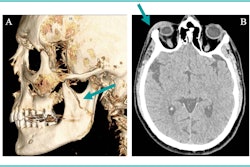
Transgender patients often face significant difficulties when it comes to receiving healthcare, and radiology departments have a key role to play in mitigating these difficulties, according to a review published March 1 in the Journal of the American College of Radiology.
The review underlines the fact that the needs of transgender patients are unique, wrote a team led by Dr. Hannah Perry of the University of Vermont in Burlington. This patient population may need imaging, and it's up to radiology to provide it in a welcoming way.
"Clear and visible displays of equality and acceptance create an inclusive experience the moment a transgender patient enters the imaging environment," the group wrote.
About 1.4 million people in the U.S. identify as transgender -- that is, they experience their gender identity to be different from the sex to which they were born, the group noted. Transgender discrimination in healthcare can take many forms, from denial of care or delayed care due to fears of mistreatment to interacting with providers who are not sensitive or aware of transgender patients' concerns.
The team outlined particular anxieties transgender patients may have:
- Harassment and discrimination. A 2008 survey of 6,450 transgender patients found that 24% were "denied equal treatment at a doctor's office or hospital, 25% experienced harassment or disrespect ... and 19% were refused medical care" due to bias, the group wrote.
- Fear of receiving lesser care due to providers' lack of understanding. Results from a survey conducted in 2020 and published in the American Journal of Roentgenology found that 29.5% of transgender patients reported that imaging staff "seemed uncomfortable providing care," Perry and colleagues noted.
- Discomfort during procedures. The imaging process can be a source of discomfort and anxiety for transgender patients if it must focus on parts of the body that don't align with a patient's gender identity.
All members of the imaging department -- from front desk staff to technologists and radiologists -- must take responsibility for making transgender patients feel safe, according to Perry and colleagues. The team offered eight ideas for doing this:
- Make waiting rooms welcoming, in part by posting nondiscrimination policies.
- Ask patients for their gender identity pronouns at every interaction.
- Add gender identity to the patient's electronic health record.
- Train all members of the imaging team about healthcare disparities transgender people may experience and how to address them.
- Include transgender patients in medical imaging research.
- Allow transgender patients access to gender-affirming clothing in the imaging suite if desired.
- Communicate imaging exam processes clearly.
- Be aware of potential gender identity concerns and approach patients with sensitivity.
Perry and colleagues hope that these recommendations for the radiology department will prompt further development of transgender patient imaging education.
"Through sharing evidence-based best practices, members of the radiology team can improve the imaging health and care of this vulnerable population," they concluded.




















